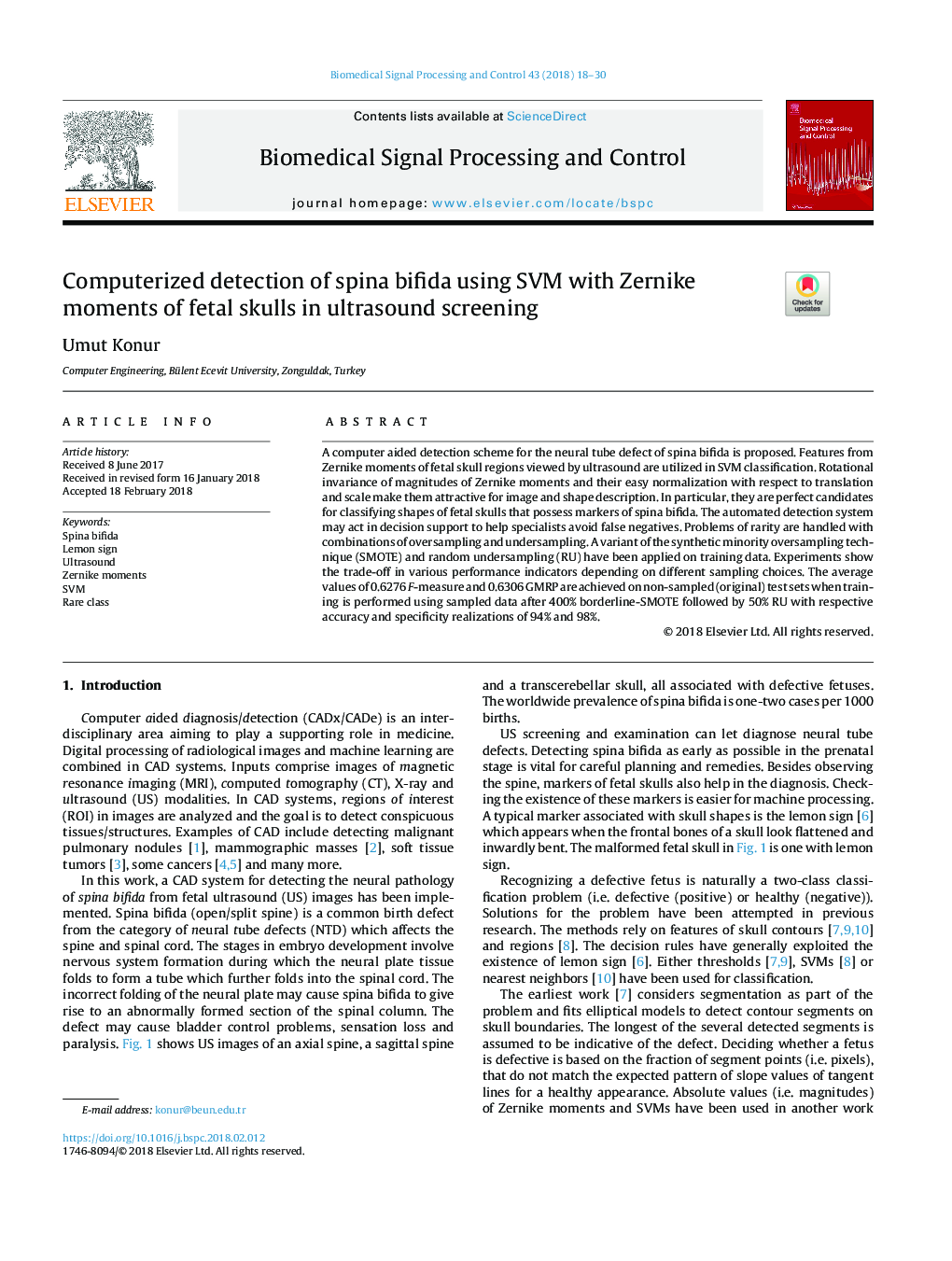| Article ID | Journal | Published Year | Pages | File Type |
|---|---|---|---|---|
| 6950817 | Biomedical Signal Processing and Control | 2018 | 13 Pages |
Abstract
A computer aided detection scheme for the neural tube defect of spina bifida is proposed. Features from Zernike moments of fetal skull regions viewed by ultrasound are utilized in SVM classification. Rotational invariance of magnitudes of Zernike moments and their easy normalization with respect to translation and scale make them attractive for image and shape description. In particular, they are perfect candidates for classifying shapes of fetal skulls that possess markers of spina bifida. The automated detection system may act in decision support to help specialists avoid false negatives. Problems of rarity are handled with combinations of oversampling and undersampling. A variant of the synthetic minority oversampling technique (SMOTE) and random undersampling (RU) have been applied on training data. Experiments show the trade-off in various performance indicators depending on different sampling choices. The average values of 0.6276 F-measure and 0.6306 GMRP are achieved on non-sampled (original) test sets when training is performed using sampled data after 400% borderline-SMOTE followed by 50% RU with respective accuracy and specificity realizations of 94% and 98%.
Related Topics
Physical Sciences and Engineering
Computer Science
Signal Processing
Authors
Umut Konur,
